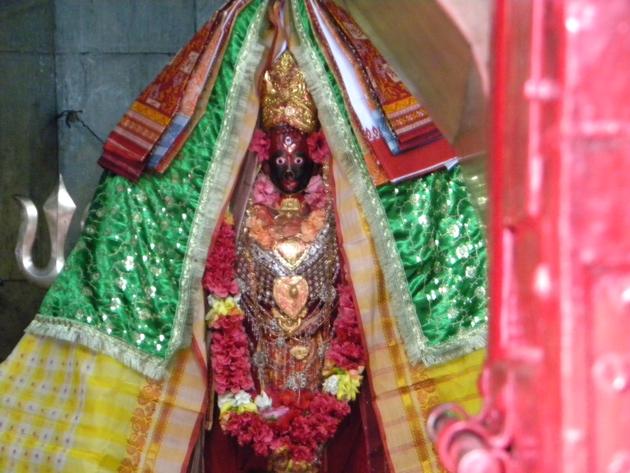The lost-and-found realm of a great goddess: Shebaba by Renuka Narayanan
In our forgotten links to common deities is a reminder of the unity that we all culturally share.
Did you know until this ‘historic’ election that the presiding deity of Tripura is the Devi in her supreme energy as Lalita Tripurasundari? I didn’t know. I jumped out of my skin when I read it, because my granny’s name was Lalita and her mother’s name was Tripurasundari. They were so far south of the north-east, but their ancestors were originally inhabitants of the cow belt who then moved aeons ago via Magadha to ancient Tondaimandalam, near Kanchipuram in Tamil Nadu.

The dotted lines run far and wide across the subcontinent and the Mahodadhi (or Bay of Bengal). The Indic bandwidth runs a good way into Eurasia too. Last year, at a talk I gave on Indian culture, I was told by a young Lithuanian diplomat that her language contained many Sanskrit words. That got me thinking about how unfair the modern narratives by both extremes have been to Hindu history. Leftist historians minimised and ridiculed Hindu history and presented it through a darkened lens; new hyper-nationalists make statements devoid of rigour and finesse, only supplying more fodder for making fun of Hindus.
In between these clashing agendas are millions of rational, God-loving Hindus who would like to live and let live with peace and dignity. They would also like the relentless Hindu-bashers to leave off stoning them.
For a start, I wish we would stop using respectable Hindu terms like ‘bhakt’ derisively. It does not win friends or influence the majority of people. It’s as rude a generalisation as using the term ‘Mozzie’ in print, which nobody would dream of doing. But being offensive is an old game for both the pseud and the hyper commentator.
Another scapegoat-cliché is ‘Brahminical’; as though there were no bitter divisions in Muslim society of Syed, Sheikh, Mughal and Pathan; or ashraf (‘noble’, meaning ‘Urdu Muslims’ of light-skinned Arab and Iranian descent) and ajlaf (‘ignoble’, meaning dark, desi Muslims).
The Urdu Muslims generally won’t marry, say, the Tamil Muslims of APJ Abdul Kalam’s community, the Marakayars, who are honourable descendants not of invaders through the Khyber Pass but of peaceful Arab traders who came long ago to our coasts with horses to trade for our pearls.
But who talks about these things, or the deep divisions in Indian Christian society, although the divisions in Sikh society recently got some scrutiny with Ram-Rahim’s arrest. Net-net, to overlook anti-Constitutional doings by those hiding in the savarna shadow and simultaneously Hindu-bash is old, divisive behaviour.
What does all this have to do with the Devi as Lalita Tripurasundari? Just this: that while ideologies may flourish and decline, we, the people, must absolutely try to live amicably and supportively with each other. So let’s not exist in disconnected mutual ignorance. Lalita Tripurasundari, the beautiful concept that we all share culturally, calls us to the right path, saying ‘Am I not yours?’
shebaba09@gmail.com
The views expressed are personal





